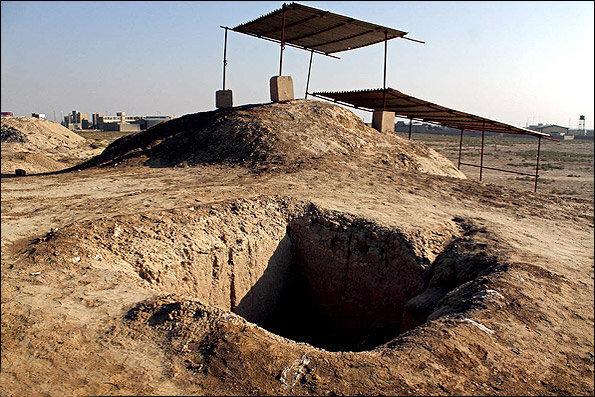Tehran-Delaran as one of the key regions of western Iran – settling in prehistoric times and contains signs of civilization, said Habiboramahmoudian, a faculty member at Islamic Azad University in Ilam.
He told Ilam that Ilam’s previous year’s formation era was called the Proto-Elamite era, and he added that many artifacts remained from this era.
Excavations carried out in the area show that mankind lived 8,000 years ago (and around) and tame livestock such as sheep and goats.
Dehloran was considered one of the cultural and economic centres of this era. This is at the same time as the Ali-Kosh era, which was famous in the pre-Potty era. The ruins of the Alicosh hill were home to people before the invention of pottery.
This era was at the same time as other ancient regions such as Chogamish, Tal Bacon Fars and Goodin Tepe.
Also, areas such as Bayat in Dehloran and Meymeh in Zarrinabad were settled by people during that time.
Agriculture and livestock breeding development
Mahmoudian explained that between 500 and 7,500 BC, this indicates that humans were accomplished to cultivate seeds of vegetables such as barley, lentils, mungen, flax and wheat. They established the first settlement and tame livestock.
These developments have been approved by evidence obtained from archaeological excavations carried out in 1961 by Kent Vaughn Flannery and Frank W. Hull on hills in Alikosch, Chegazefid and other ancient regions.
Man was achieved to set up the first villages and settlements between 5,500 and 7,500 BC. These villages show the important developments in the architecture and social organization of the people of that era.
Deloran is one important area of prehistoric times and has played a major role in promoting agriculture, animal care and preliminary architecture.
Given the existence of rich monuments, he said the area is a testament to the advancement of prehistoric ancient civilization and human progress.
Previously Abdulmalek Shanbezadeh said he was the state tourism director. Duran Plain said it is one of the most important regions in the country where many archaeological excavations and investigations have been carried out so far.
However, over the past two decades, the Iran-Iraq War (1980-1988) and the beginning of the leveling of land for agricultural purposes, he explained, had caused irreparable damage to ancient sites in the plains.
The Dehloran Plains are best known for excavations carried out in several prehistoric locations, and for research that unravels the origins and development of sedentary agricultural villages and towns in the region, documenting the history of the settlements into modern times.
As a relatively small and far-reaching rural area, it has always been affected by political, economic and technological developments in the adjacent areas of Fuzestan, the Zagros Mountains and Mesopotamia. Throughout the third millennium BC and subsequent history, it was under the political control of one or another in these regions, according to the Encyclopedia of Iranica.
Although no coronary texts are found at any of the Dehloran sites, the most prominent mound, Tepe Musiyan, could be identified as the ancient Urya, the city of eramite known from the Mesopotamian texts.
Dehloran is on the trade route that connects Zagros Mountains with Mesopotamia. At the 1st Millennium, a route linking Susa to the Achemenid capital of Ekbatana passed through the region.
From the 18th century, Dehloran was a winter resort for local tribes.
KD

